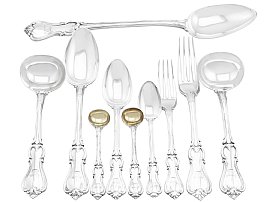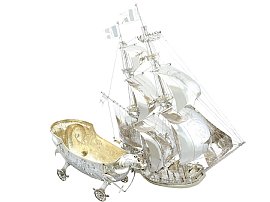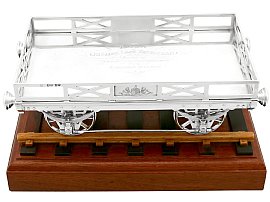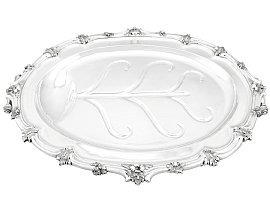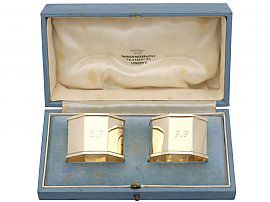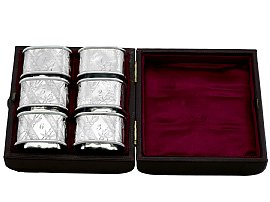History of the Silver Nef
A Nef can be used as an intricate and detailed dining table ornament, container or centrepiece. Nefs were often crafted from precious metals like silver, silver-gilt or gold and adorned with enamel and jewels.
Nef History
Nefs can be recorded as early as 1239 in France; their use has slightly evolved throughout time. They were most popular during the Middle Ages and the Renaissance when people in the shipping business had a lot of money, therefore owning a nef became a symbol of wealth. This was further emphasised by the nef's use of holding delicacies such as salt. Due to salt being a precious commodity during those periods, the saying "someone is worth their salt”, meant if somebody had a lot of salt, they were a valuable person worth their cost. Nefs would display the salt and show off the persons wealth to everyone.
It is widely believed that the concept of a nef originates from a silver ship model dedicated to the wife of King Louis IX, Queen Margaret. This explains why these centrepieces are always so grand, reflecting the wealth required to make them.
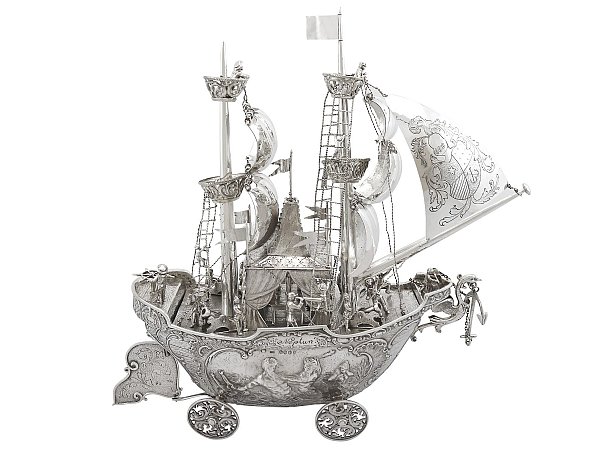
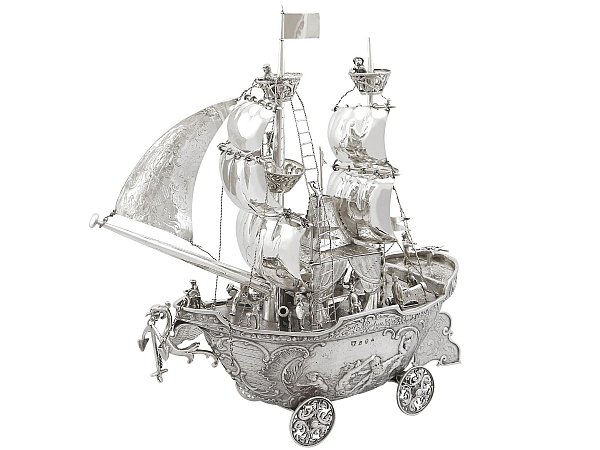
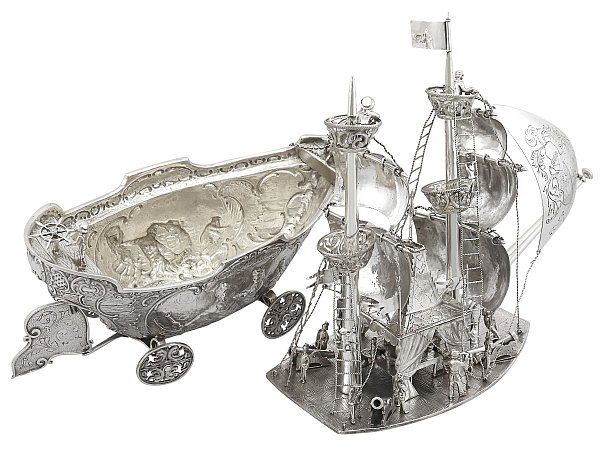
Uses of the Nef
Although initially, nefs consisted of just the hull, perhaps to be used for drinking cups, they soon became too crowded to hold anything. By the 14th century, so much detail was added - including sails and a crew - as was the case with this exceptional Victorian silver nef.
Some 19th century nef designs separate below the canon, opening up to reveal space for storing bottles of wine at the dinner table. With the high degree of ornamentation and design used to create nefs, it's no surprise that they were such statements. Due it the intricate detailing, the nef posed a slight problem when it came to cleaning the piece. Only those who could afford the staff to thoroughly clean their belongings could afford a nef.
They have been used for holding dining implements such as cutlery, napkins, and spices. However, for dinner parties or special occasions, the hull could hold wine and special condiments. Some nefs are fitted with wheels, proving particularly useful at dinner parties as they can easily be moved around the table to serve guests.
Over time, the functional nef lost favour, becoming an imposing centrepiece that was less practical as a part of the dining experience.
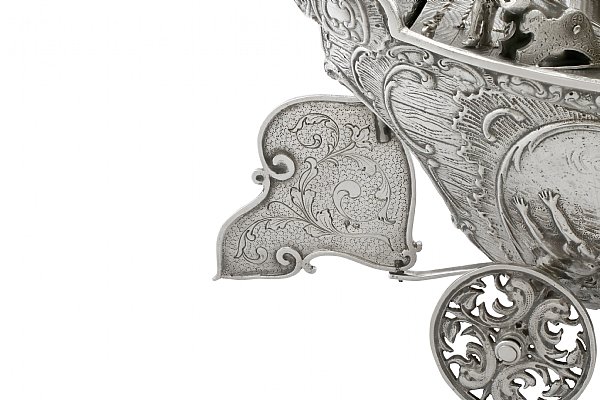
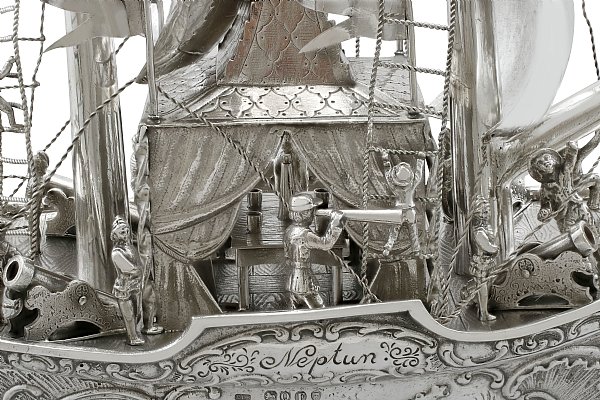
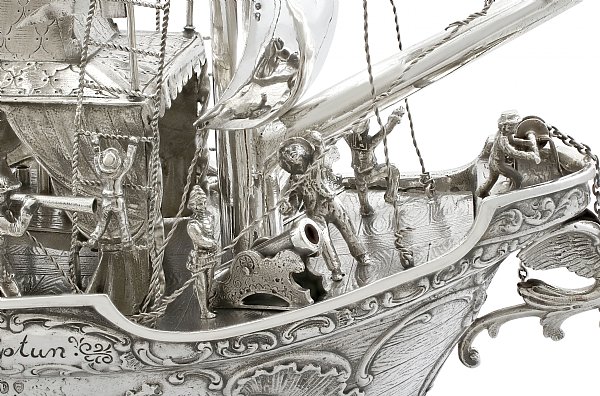
Nefs and Wealth
Nefs were expensive, and owning one was a clear sign of someone's social status. At dinner parties, the nef was often placed in front of the most important person at the table, perhaps as a reminder of the host's financial status. They were exclusively used during elaborate meals such as banquets for Kings, Queens, Emperors and Dukes and the nef would be presented ceremoniously to the king to distinguish him from the other guests.
